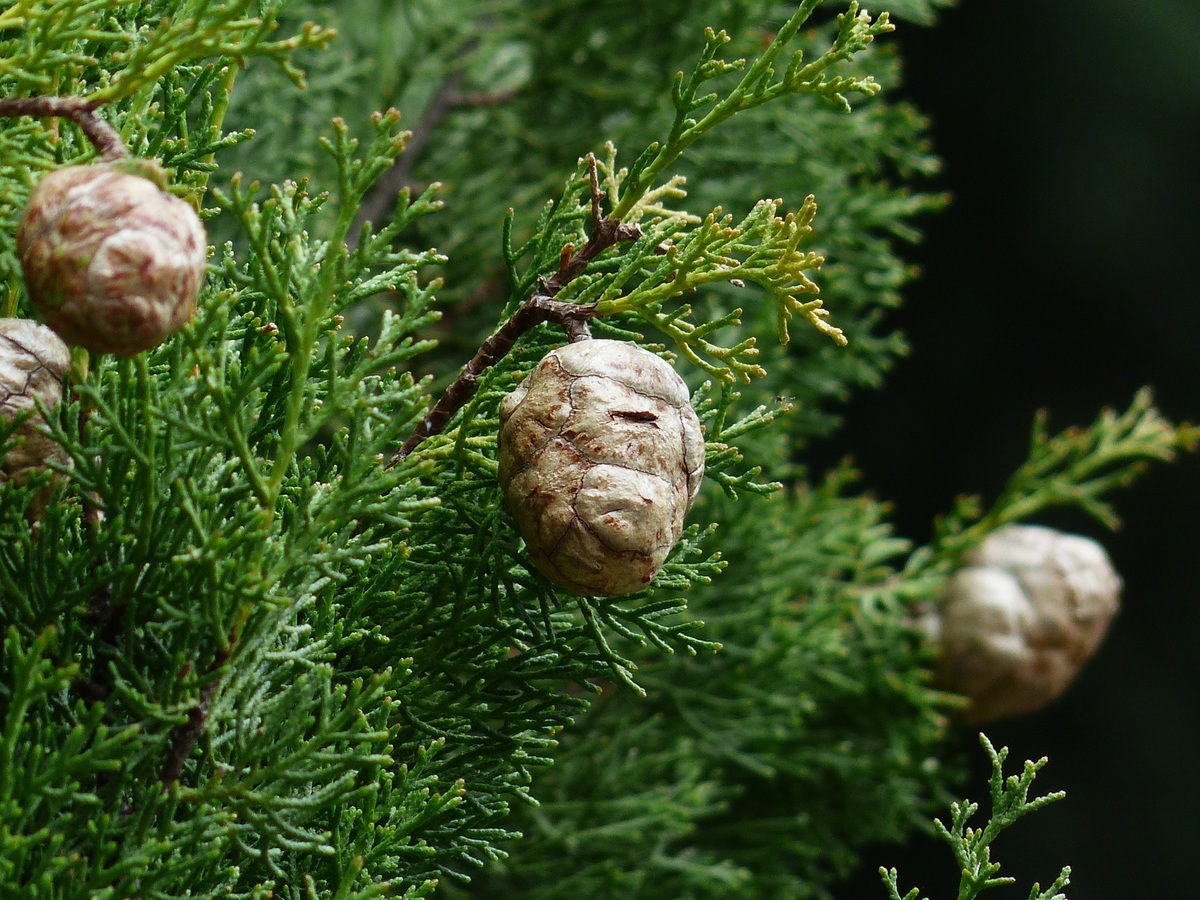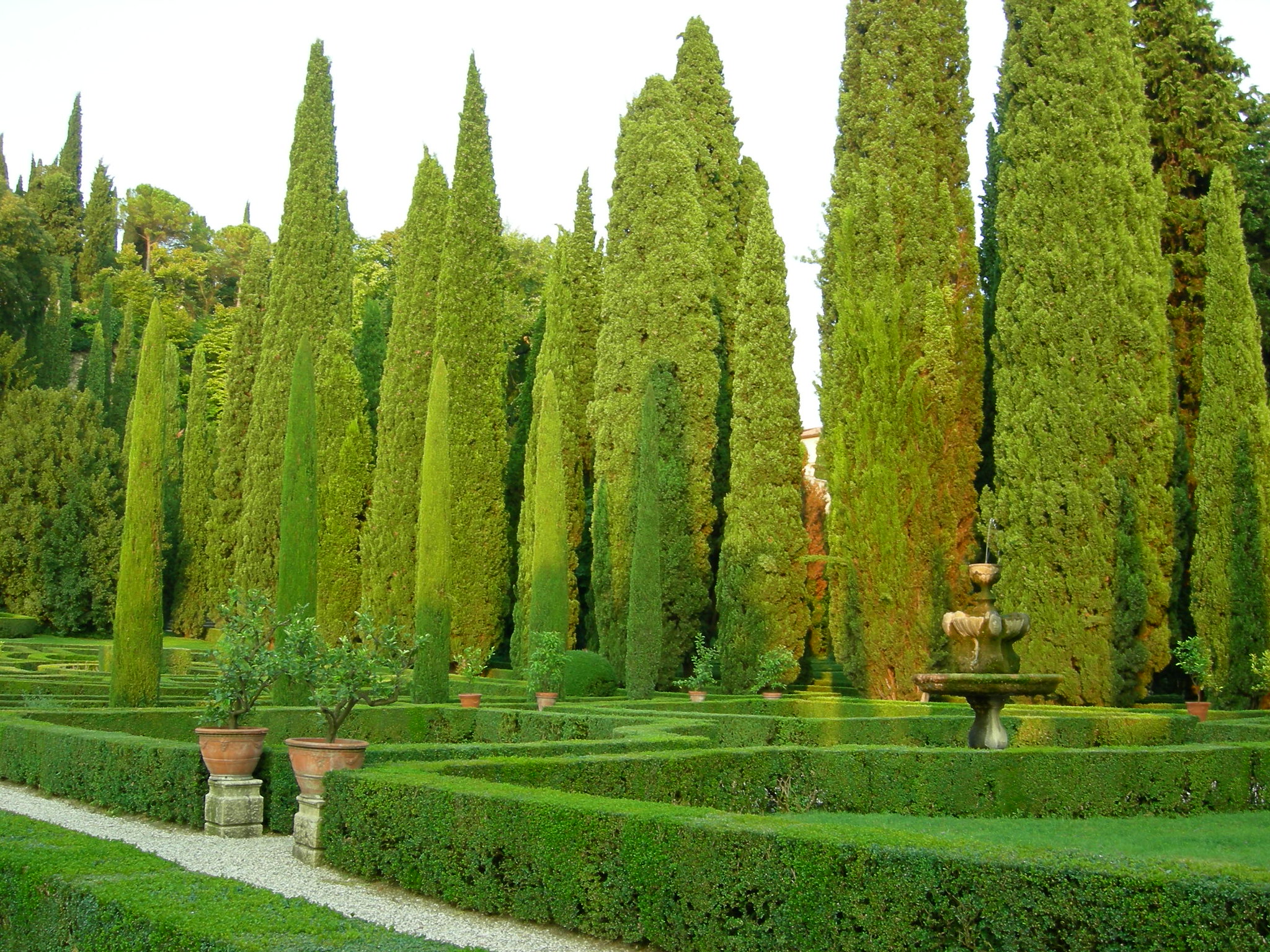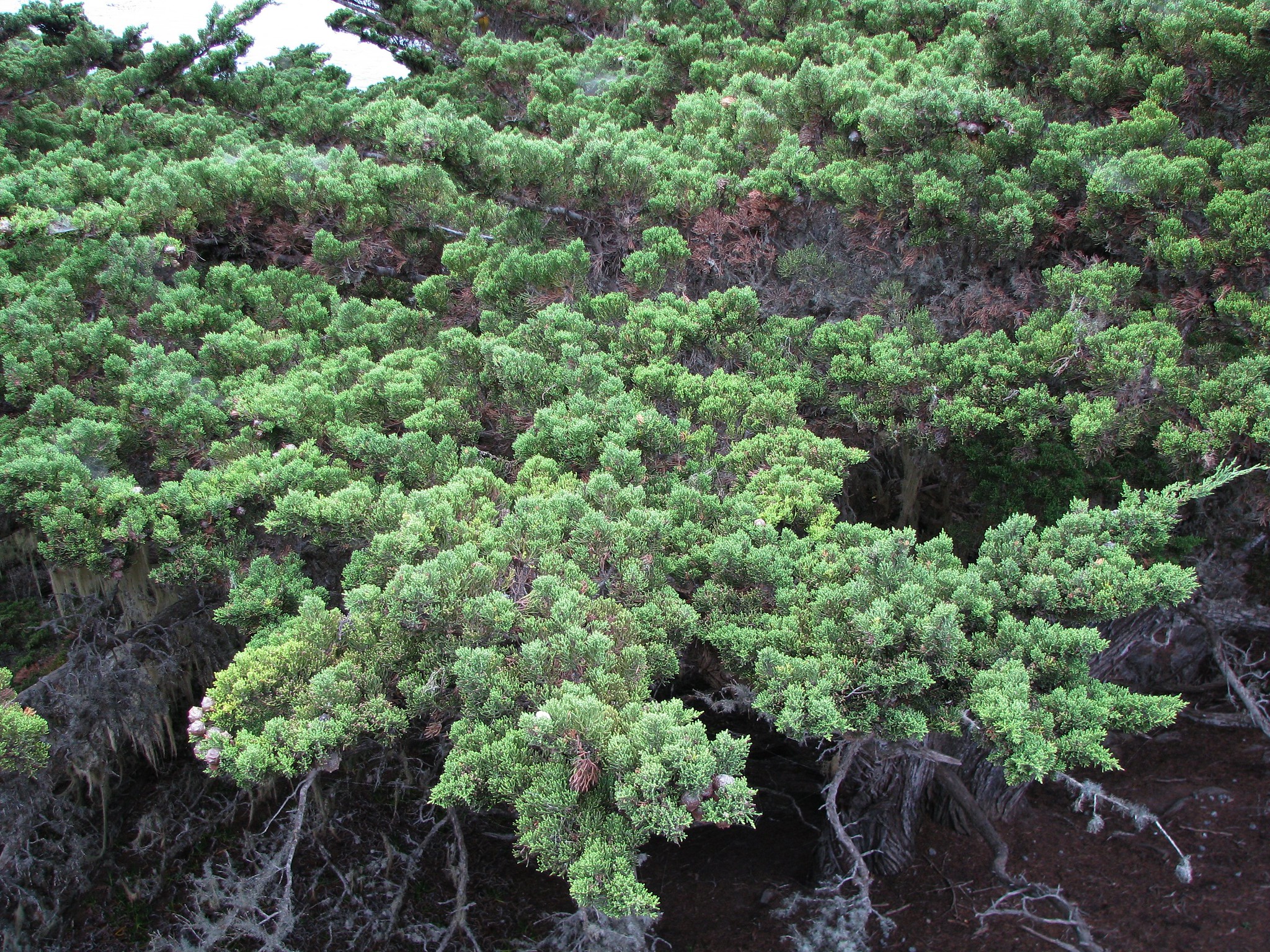
Conifers are great garden plants; specifically, they look great as hedges, since its leaves are evergreen, and have the necessary height so that we can enjoy our private paradise without having to worry about unwanted glances, or strong winds.
But What is the care of the cypress? Apparently, they seem to be very easy to grow, but… are they really demanding?
Cypress trees maintenance

Image - Flickr / Garden tourist
There are many people, and more and more, who do not want to have cypress trees in their garden. And reasons are not lacking. These types of plants are very sensitive to excess moisture, the roots rotting in a matter of days and thus causing the leaves to brown and the subsequent death of the plant. The causes of this problem are the fungi, in this case, of the Phytophthora or Seiridium genera, which saw an opportunity to attack when they began to water too much.
But it can be prevented. How? Watering whenever necessary. It is true, with these words I am not telling you much; but in fact, irrigation is the hardest to control. That is why we will start by talking to you about this.
How much do you have to water cypress trees?
Depending on the weather, I will tell you that generally they should be watered once or twice a week, maximum three. Think that the hotter and drier a climate is, the more you have to water because the land will remain wet for less time.
Also, you should keep in mind that there are certain species, such as the Cupressus arizonica known as blue cypress, which resist drought very well but not so much waterlogging. For this reason, these trees can stop being watered from the second or third year as long as they are planted in the ground and at least 350-400 millimeters of precipitation falls per year.
How to plant them?
The transplant of cypress trees is delicate. Its roots are not very resistant to manipulation, and for this reason it should be avoided to change them a lot of pot, or to disturb them excessively when they are planted in the garden.
One of the things to keep in mind is that ideally they should be planted at the end of winter, before they resume their growth. This will make it easier for them to recover. The step by step to follow is as follows:
Potted
- First, you have to choose a pot that has holes in its base. The material with which it is made is indifferent, but it must measure at least 5-6 centimeters in diameter and height more than the previous one.
- Then, add a layer of about 3 centimeters of clay balls, and then a little universal substrate mixed with 30% perlite.
- Then carefully remove the cypress from its old pot, and insert it into the new one. If you see that it is too high or too low, remove or add more substrate.
- Finally, finish filling the pot, and water thoroughly.
In the garden
- The first step is choosing a suitable location for your cypress. This must be sunny, with fertile and well-drained soil. It is also important that it is placed at a minimum distance of 7 meters from pipes, walls, etc., and about 50 centimeters between one cypress and another if you want to have a nice hedge.
- Next, dig a 1 meter by 1 meter hole, and fill it with a 20-centimeter layer of expanded clay.
- Then fill it a bit with universal substrate.
- Next, carefully remove the cypress from the pot, and place it in the hole. If it is too high or too low, remove or add dirt.
- Then finish filling.
- Finally, water.
What is the best fertilizer for cypress trees?
Cypress trees need, in addition to water, 'food' so that they can grow healthy. This is why must be paid from early spring to late summer, either with a specific fertilizer for conifers that you can buy here, or if you prefer with fertilizers such as guano (for sale here), mulch, compost, ...
There is no such thing as 'the best fertilizer for cypress trees', as they are all good as long as they are used correctly 🙂.
Plagues and diseases

In general they are quite resistant, but in hot and dry environments they can be attacked by mealybugs and borers; and on the contrary, in very humid environments or when they are watered excessively, they are vulnerable to dry cypress, caused by the fungi Seiridium.
Pests are well controlled with diatomaceous earth and by keeping trees properly watered and fertilized. To combat the disease, you have to treat them with specific fungicides like this one that they sell here.
Likewise, it is worth doing preventive treatments with broad spectrum fungicides in spring and late summer, following the instructions specified on the packaging.
How to recover a dry cypress?
When the cypress begins to have brown leaves, even with a different touch than they normally do, it is time to worry. At that point, we can assume that there has been a problem with the irrigation, either by excess (usually the most frequent) or by default.
To do? Well the first thing is treat it with some fungicide. Just in case. It is relatively easy to recover a plant that has been thirsty, but not when that plant is drowning. Fungi act very quickly, hence my first advice is to treat cypress with fungicide.
Then, check the humidity of the soil, either with a digital humidity meter, or by inserting a thin wooden stick -with great care-. If when you remove it, it comes out with a lot of soil attached, it is because it has too much water. If this is the case, watering must be suspended until it has lost all moisture.
But if on the contrary the earth looks and feels dry, and even if you have the cypress in a pot and you have noticed that the substrate has become so compact that it seems to have become a kind of 'block' of earth, give it a generous watering. Soak all the earth well.
Will it be saved? Not know. If you have been thirsty, probably yes, but if on the contrary you have suffered excess water ... it will be more difficult for you to survive. But hope is the last thing to be lost 🙂.
When to prune the cypress?
There are certain trees that should not be pruned, either because they take time to heal, or because later it is impossible for them to develop according to their species ... Conifers are one of them. They should not be pruned unless they have dry branches, and then sealing the wound with healing paste, just in case.

Image - Flickr / David Eickhoff
With these tips, your plants are sure to grow healthy 🙂.